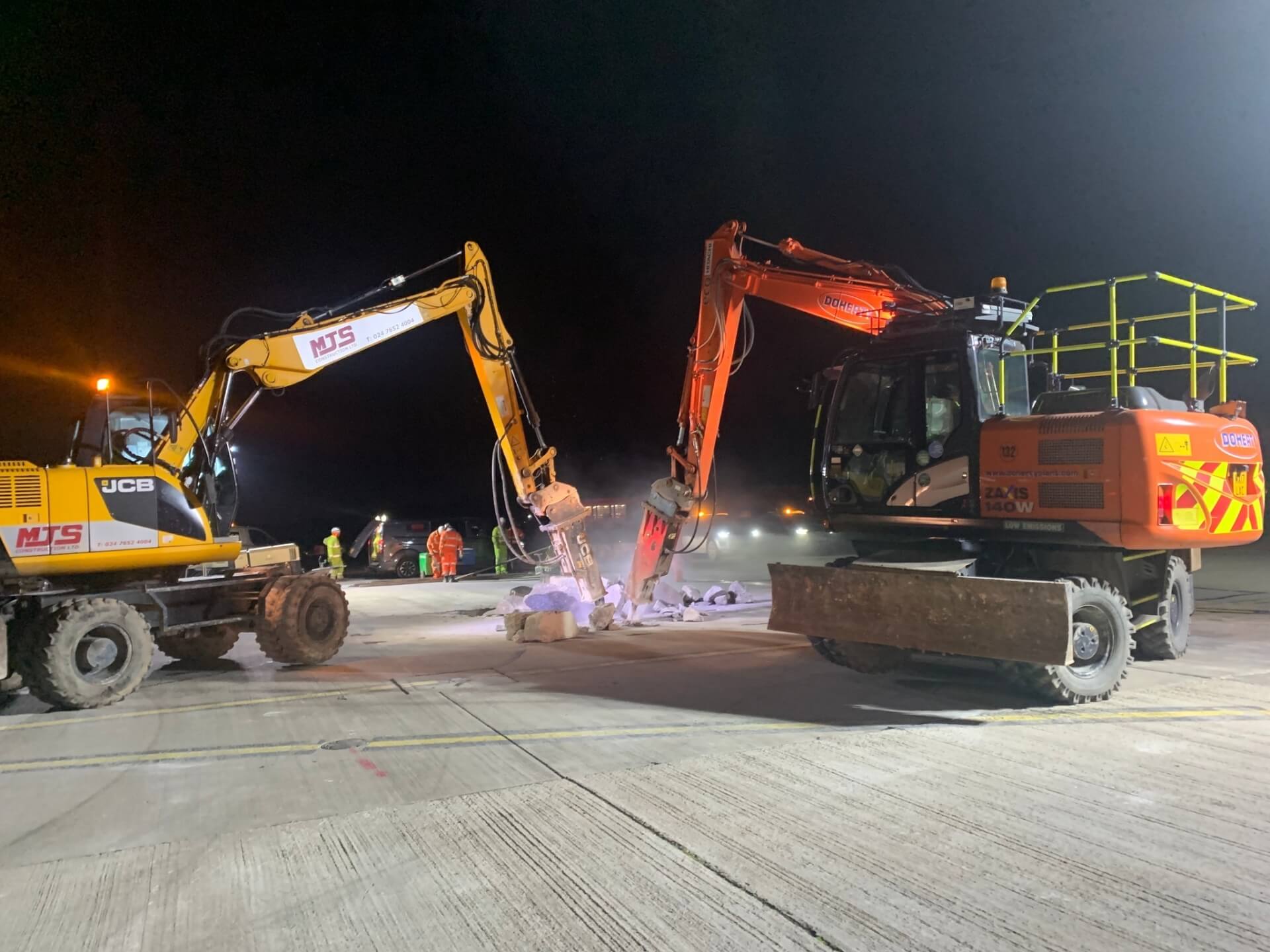Birmingham Airport (BHX) carried out £2m of essential airfield maintenance work throughout November.
The work, which included resurfacing and removing aircraft tyre rubber from sections of the runway, took place overnight when there were no flights.
Over the month the following activities were completed by up to 80 nocturnal engineers:
- Replacing 500 square metres of taxiway concrete near to the main terminal.
- Removing 16,600 square metres of tyre rubber deposits from the runway left by landing aircraft.
- Clearing more than 6,000 metres of airfield drains to reduce the risk of flooding.
- Repairing 110m of cracked runway edge drain surface.
- Removing and replacing 1,100 square metres of cracked runway surface.
- Repainting 10,000 metres of runway and taxiway line markings.
- Surveying 180,000 square metres of runway pavement using mobile vehicle systems to collect data on the surface and below ground structures.
- Safety critical testing of airfield lighting and navigational aid systems.
Nick Roberts, senior project manager for BHX, said: “Our airfield is vast, so the chances are most people, even those living nearby, won’t have been aware of our night-time activity this autumn.
“We do these vital jobs annually to ensure our runway and its taxiways are safe and in good shape to serve our customers for the next 12 months.”
Specialist machinery is used to mill off 50mm of the existing runway surface in need of repair before the new asphalt is laid and compacted.
By the time flights resume a few hours later as dawn breaks, the asphalt has set and the runway surface is ready to use again.
BHX continually monitors the grip level of its runway, using a high-pressure water blasting system to remove rubber that accumulates on the surface from landing aircraft tyres.
Removing this rubber ensures the runway surface is safe and offers good friction (grip) when wet.
Five-metre by five-metre cracked taxiway slabs are cut and broken out to a depth of up to 535mm. Steel reinforcement is added and different joints are installed to prevent large cracks occurring in the new concrete. Fast-setting, pavement-quality concrete is used to replace the cracked slabs.
By the time the first flights push back a few hours later, the replaced sections are rock-solid and ready to bear the weight of an aircraft.





